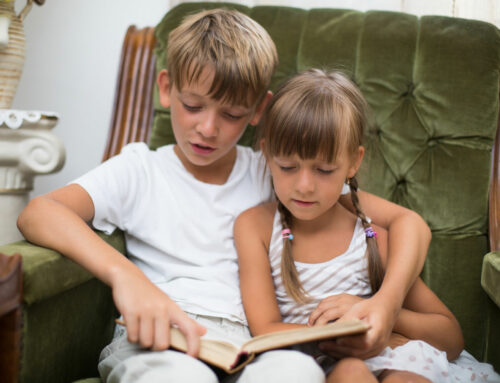
“A people without the knowledge of their past history, origin and culture is like a tree without roots.” – Marcus Garvey
When reading this quote, I think of a house and its foundation. Without a firm foundation and the right materials, a house will fall. A tree without roots cannot soak up the nutrients necessary to stand and grow strong. The same is with a nation. If we don’t know the truth, birth, and building blocks of our nation, both good and bad, we cannot grow as a nation. As you can tell, I love history quotes just as much as I love history. There is so much that can be learned in a simple quote stated by a God-fearing person with outstanding character traits. After all, isn’t this what we desire for our kids?
In this continuation of the blog series, Ideas for Making Social Studies and History Come Alive, I have included additional activities our family has used to really bring the whole history experience full circle.
Road trip themes:
While we travel by car during the summer to visit family, our favorite road trip activity is finding places along the way to stop and visit. Some summers we have found small “hole in the wall” places that make a huge impact; while other summers, we have focused on specific themes. Themes have included the Trail of Tears, presidential homes, presidential libraries, museums, WWII, and Texas history.
One of our favorite finds was a WWII museum that included a submarine called The Batfish. The tour of The Batfish was amazing (and a little too claustrophobic for my liking, but still great)! It was an amazing find while simply traveling along the highway to Illinois.
Current events:
There are different ways to become involved in current events. Kids of all ages can be included in current events based on the type of event, as some current situations are better suited for older students.
With that said, one way our family has submerged ourselves into the tapestry of history has been to attend current historical events. For example, I took the kids to watch the train carrying Former President George Bush Sr. to his burial place. The train’s route was traveling on the tracks directly outside of our neighborhood. Our kids loved seeing the train, as well as learning about the life of the president and the traditions and events that occur when a president passes.
There is no doubt that we are living history through this covid pandemic, creating yet another avenue in which to help connect current events with timelines. For example, students could spend time comparing our current pandemic to previous pandemics, learning about the differences between medical advances past and present, medical knowledge during the previous pandemics, and more. This also allows students to enhance their daily schoolwork by having them journal about their covid experiences or by engaging in research papers and projects. Of course, it is important to make sure that the activity is appropriate for the age, maturity, and emotional development of the child as this has been a hard couple of years.
Next, ongoing supply shortages pave the way for older students to connect current world events and government with supply and demand prompting opportunities for research projects and in depth discussions on economics.
Lastly, the new invasion of Ukraine by Russia can launch exploration into previous battles and wars. The topics of the World Wars, The Revolutionary War, The Civil War,, and many more are typically topics of interest for kids, especially boys. When my son found out that I was writing about various wars in this blog article, he ran to his room to make sure I included this book series resource for boys: Great Battles for Boys by Joe Giorello. Another good resource we have recently watched in regards to the invasion of Ukraine is The Drive Thru History video that explains the history of Ukraine and Russia (and many other historical aspects).
Art history:
Our family has used the Art Study Archives — Simply Charlotte Mason to add art history to our day. It is a quick and simple, yet thorough way to introduce kids to the history of different art styles, techniques, and expressions. This allows a family to dive into all aspects of art history and how the events at the time contributed to the style of art.
We have also included the art curriculum Artistic Pursuits in order to apply the basic elements of art to the history of art and the creation of your own projects.
Lastly, I have recently found this Youtube art video series called Paint It Kids. The videos are short, yet informative and contain an art project for kids to work on. These videos are great for preschool and elementary-age kiddos.
Music history and Hymn studies:
Music history also allows families to explore how history and music influence each other throughout the years. One way to do this is to incorporate hymn studies. I specifically remember our family trip to the Alamo and our tour of the San Jose Mission in San Antonio, TX. During the tour, our tour guide told us about a hymn composer we had recently studied, St. Francis of Assissi. Our family all looked at each other and began to giggle with excitement as we were putting bits of history together. Below are some resources for you to explore if interested in studying hymns.
Hymn of the week: Hymn of the Week for Hymn Study | Celebrating Holidays
Not Consumed: Still Singing: Hymn Stories For Every Season (notconsumed.com)
Family trees:
Creating a family tree could allow your kids to explore the contributions your family has made throughout history. Before my dad passed, he compiled an extensive amount of family history on both my mother and father’s side. Our family used this activity to help us look at how God has used our family throughout the years, such as by providing for those during the Great Depression via a family owned grocery store. This really has opened the eyes of my kiddos to the importance of history and how they will make their mark on history.
Tuttle Twins projects:
The Tuttle Twins books incorporate information about government, laws, citizenship, and economics for toddlers through teens. These books can be used as part of the Good Citizenship requirement set by the Texas Homeschool laws within your own homeschool curriculum or as part of a read-a-loud and discussion in a co-op. We have combined the two options to help reiterate what is learned during co-op throughout the week by using the downloads that can be purchased from Children’s Books that Teach about Freedom | The Tuttle Twins – The Tuttle Twins.
However, our co-op took book #4 Tuttle Twins and the Food Truck Fiasco to a new level of learning. The kids were so fascinated with the concept of the book and the inequality being shown to the food truck owners, that a Food Truck project was formulated. For this project the students in our co-op created the name of their food truck, a model of their food truck, the product(s) to be made, a menu with prices and the logo. Then, each student presented their project, including a food sample. (did I mention we were so full that we didn’t need dinner after all of the samples?)
THSC Good Citizenship projects:
“We must remember that intelligence is not enough. Intelligence plus character-that is the goal of true education.” – Martin Luther King Jr.
The study of Good Citizenship focuses on the various aspects that define what a good citizen is within a community, state, or country. This is a wide topic, but when the subject is stripped down to the basics, the quote above encompasses the very essence of this area of learning.
As a member of the Texas Homeschool Coalition (THSC Membership – Join Today – Texas Homeschool), a valuable benefit is the THSC Good Citizenship curriculum that is available for homeschooled students from 3rd to 12th grade. The beauty of this curriculum is that it can be revisited from elementary to junior high to high school due to the variation in activities based on the appropriateness of age.
Theme units:
For students who are project-based learners, themes are a great way to integrate all subject areas. I utilized theme units a lot when my children were smaller, especially in the preschool and elementary years. That does not mean, however, that theme units are null and void in junior high and high school. This mode of learning can be very beneficial for all ages. Some of the themes our family has enjoyed include the following: pioneers, famous battles, presidents, civil rights, inventors and inventions, dinosaurs, St. Patrick, St. Valentine, the Renaissance, etc.
Living Books:
Living books are different from the typical textbook reading in that a child is reading about a person or event in a way in which the story becomes alive. Examples include historical fiction, books about people in history or science, and great literature. A fun living book study that my family used for Texas history involved the Magic Tree House book #30: Hurricane Heroes in Texas and The Magic Tree House Fact Tracker: Texas. Not only did we enjoy an exciting adventure, but we also learned many interesting facts about Texas. We even took it further and researched specific people mentioned in the books to learn more about these amazing individuals and their contributions.
Drive Through History Specials:
Drive Thru History with Dave Stotts is an amazing history show with a variety of history series’ as well as specials on different holidays, such asMemorial Day, Veteran’s Day, St. Patrick’s Day, Valentine’s Day, and more.
Families have options in how they view the episodes. On the Drive Thru History main page, there are streaming packages that a family can purchase that also comes with downloads for lessons. If purchasing a package is not an option, families can look up episodes on YouTube and/or watch them for free on TBN (we stream ours through our Roku).
Movies and Movie Scavenger hunts:
My final fun and exciting way to include history in your homeschool is to have what my family calls “movie scavenger hunts.” We have watched both National Treasure 1 and 2 in search of landmarks and historical symbols. After the movies we researched and discussed the different landmarks and symbols found. Many activities can be added after the movie has been watched, For example, you could make a book of the symbols and landmarks or let your kids decide on one to build or do a research project on.
Another fun series to watch are the historical American Girl movies. My daughter loves these movies and books. So many good discussions and learning can take place after viewing these videos.
Do you want a hint on when to include video learning? Well, in our house we utilize video learning on sick days, cold days, rainy days, and days when we need a break from our regularly scheduled school routine. So, pop some popcorn, warm up some hot chocolate, grab some blankets, and enjoy the movie.
One final note to bring it all together:
I am asked daily how all subjects can be included in a theme. Here is a quick example from when our family studied the Galveston hurricane of the 1900s.
Language:
- Reading: we read the Magic Tree House book #30 Hurricane Heroes in Texas.
- Writing/Grammar/Spelling: After or during the reading I had kids journal about their experiences during Hurricane Harvey. This allowed us to work on writing skills, as well as grammar and spelling. The Institute for Excellence in Writing and the editing process has been a great resource for working on these aspects of language for our family.
- Penmanship: Quotes were taken from the book to practice handwriting or cursive.
- Vocabulary: We wrote down any words that were unknown, looked them up in the dictionary, and then determined the appropriate definition based on how the word was used in the sentence.
Math: Wind velocity, tracking the hurricane before it makes landfall (longitude and latitude), percentages (the cone of uncertainty), etc.
Science: We learned about weather, clouds, water temperature, hurricane season in other areas of the world, various names hurricanes are called, and created our own “storm” as a science experiment.
Good Citizenship: We discussed the way people helped each other during the hurricane in the story as well as Harvey. We also talked about how the government provides aid during times such as hurricanes and the importance of the first responders.
History (expanding): The Magic Tree House Fact Tracker: Texas
A word of encouragement:
I mention the examples throughout each part of the blog as a springboard to what your family could do with themes and additional activities. If theme-based learning is not for your family, great! You do you! My goal is to help you begin to see outside the box. There is no pressure here, only a hope that these ideas will open up ideas for your family to enjoy in the way that works best for you. There is no stress or judgment here, only a heart full of compassion to help you be the best teacher for your family. Enjoy the ride and the memories!
Quote by Martin Luther King Jr.: “We must remember that intelligence is not enough…” (goodreads.com)
Did you know we have a monthly emagazine, The Home Educator Express? It’s free to subscribe and get ideas like found in this article to help keep homeschooling fresh! Find past issues and subscribe for free.
Heather Young
Heather Young has been homeschooling since 2013 and joined THSC in 2021 as a Special Needs Specialist for Customer Relations and also a Homeschool Mentor. Her goal is to encourage families through inspirational creativity and a firm foundation in Christ. She enjoys reading, cooking, and exploring history with her two kids and supportive husband of 15 years.




